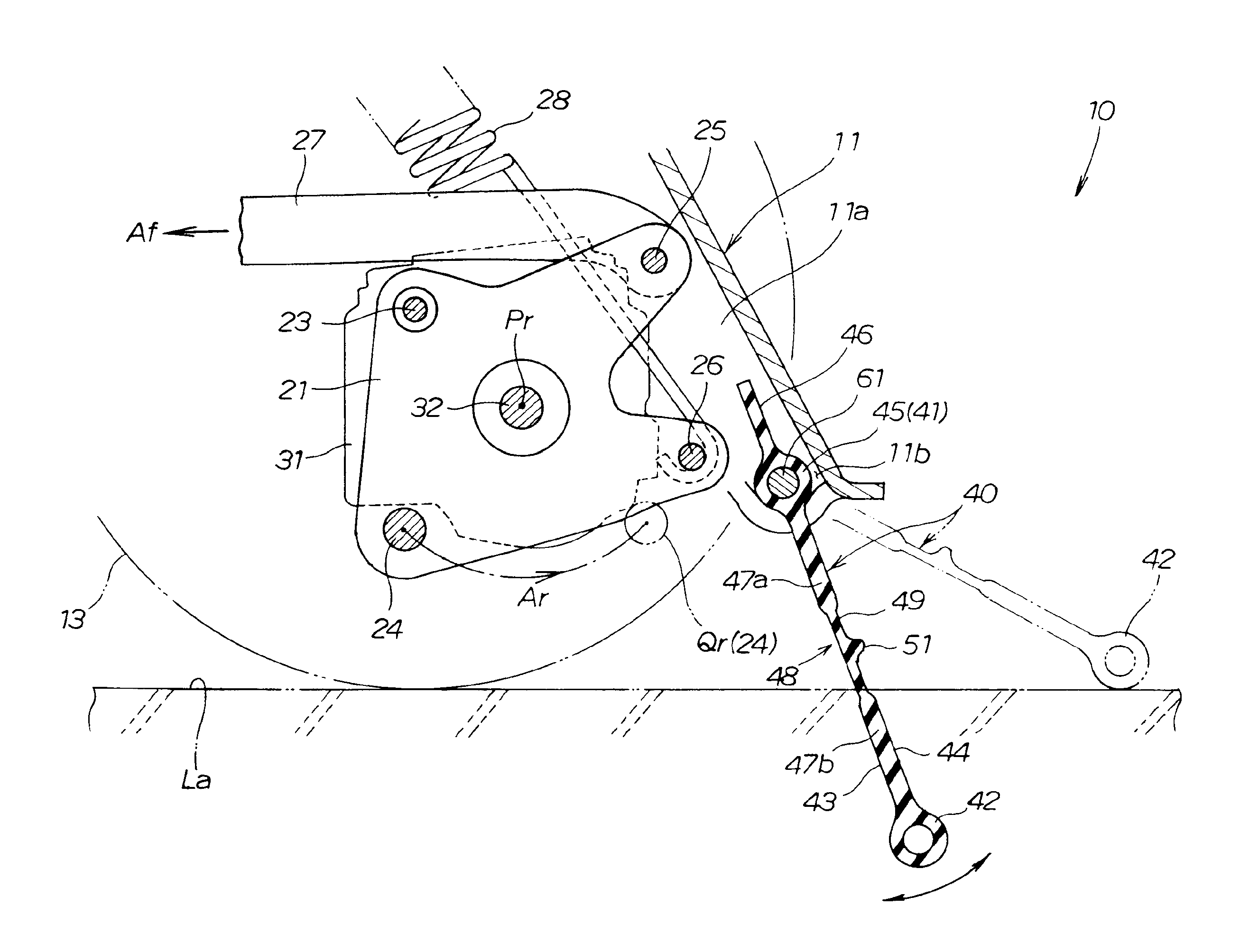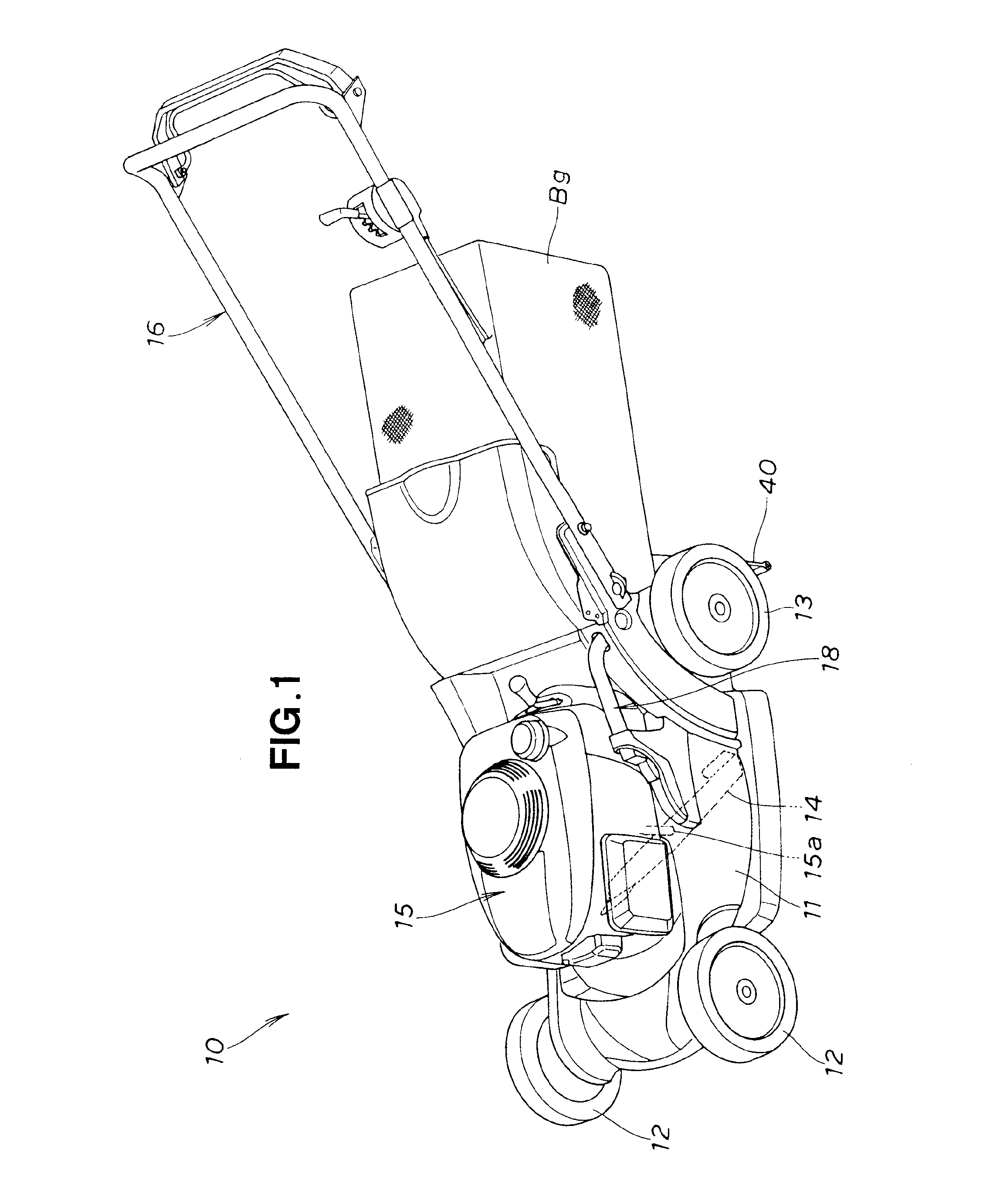Walk-behind lawnmower having a rear shield
a technology of rear shield and lawnmower, which is applied in the field of walk-behind lawnmowers, can solve the problems of reduced flexibility of rear shield, particularly severe rear shield bending, and disadvantageous rear shield bending rigidity
- Summary
- Abstract
- Description
- Claims
- Application Information
AI Technical Summary
Benefits of technology
Problems solved by technology
Method used
Image
Examples
embodiment 1
[0023]As shown in FIG. 1, a walk-behind lawnmower 10 is a walk-behind self-propelled work machine for cutting grass, and is composed of a housing 11 that is open at the bottom; left and right front wheels 12, 12 that are provided to the front part of the housing 11; left and right rear wheels 13, 13 that are provided to the rear part of the housing 11; a mowing blade 14 housed in the central interior part of the housing 11; an engine 15 provided to the upper part of the housing 11; an operating handle 16 extending to the rear from the rear part of the housing 11; and a height-adjusting grip 18 provided to the upper-left part of the housing 11.
[0024]The housing 11 is composed of, e.g., a resin-molded article and also serves as a chassis. The engine 15 is laid over and bolted to the upper surface of the housing and thereby integrally assembled therewith. The engine 15 is a so-called vertical engine that has an output shaft 15a extending from a lower end of the engine into the housing ...
embodiment 2
[0059]FIGS. 8A through 8C show the cross-sectional structures of rear shields 40A through 40C according to Embodiment 2. Embodiment 2 provides examples in which the lower end part 42 of the rear shield 40 shown in FIG. 4 has been modified. The rest of the configuration and the operation are identical to the configuration and operation of the lawnmower 10 according Embodiment 1 shown in FIGS. 1 through 7, and descriptions thereof will therefore be omitted.
[0060]Specifically, a lower end part 42A of the rear shield 40A shown in FIG. 8A does not have a through-hole; i.e., is formed as a round part having a solid circular cross-section. The lower end part 42A (round part 42A) has a perfectly circular cross-section.
[0061]A lower end part 42B of the rear shield 40B shown in FIG. 8B is formed as a round part that has an elliptical cross-section that lengthens in the direction toward the upper end part 41 when viewed in cross-section. The lower end part 42B (round part 42B) is formed in a h...
PUM
 Login to View More
Login to View More Abstract
Description
Claims
Application Information
 Login to View More
Login to View More - R&D
- Intellectual Property
- Life Sciences
- Materials
- Tech Scout
- Unparalleled Data Quality
- Higher Quality Content
- 60% Fewer Hallucinations
Browse by: Latest US Patents, China's latest patents, Technical Efficacy Thesaurus, Application Domain, Technology Topic, Popular Technical Reports.
© 2025 PatSnap. All rights reserved.Legal|Privacy policy|Modern Slavery Act Transparency Statement|Sitemap|About US| Contact US: help@patsnap.com



